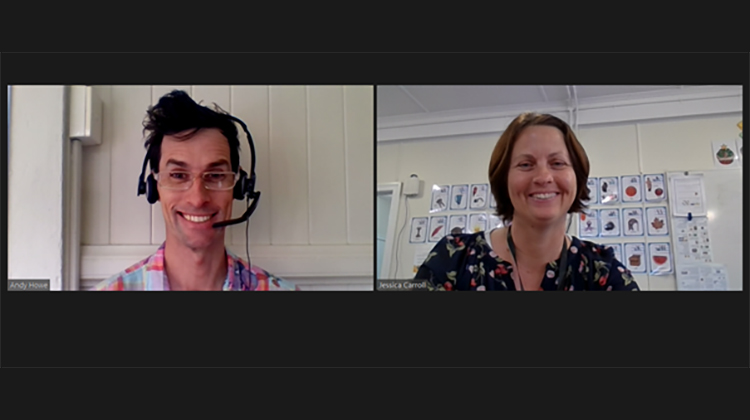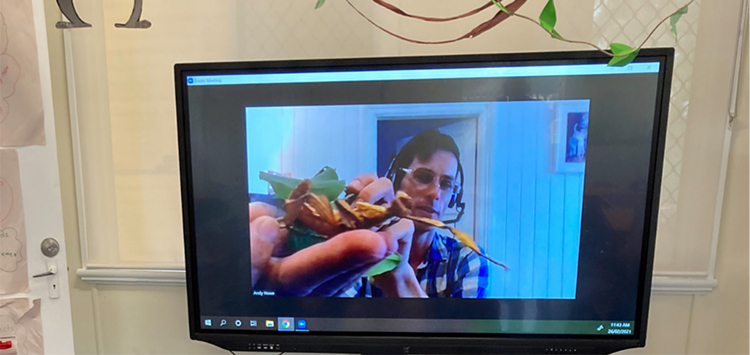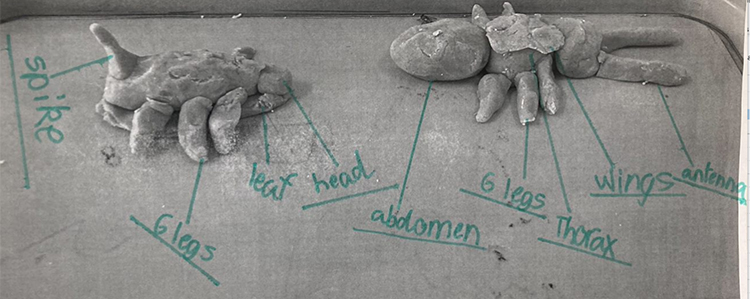Insect expert has remote school abuzz with excitement

St Patrick’s Catholic School is based in the small township of Winton, Central West Queensland, and is attended by a total of 20 students. But neither their small school size nor remote location has prevented them from benefiting from a unique partnership between teacher Jessica Carroll and insect ecologist Dr Andy Howe from the University of the Sunshine Coast more than 1000 kilometres away.
Jessica and Andy have never met in person, but are partners through the STEM Professionals in Schools program, which brings real science, technology, engineering and mathematics to life in classrooms around Australia by partnering STEM professionals with teachers. Together, Jessica and Andy have enhanced science education for all year levels at the school and seen renewed enthusiasm for STEM subjects and understanding of potential career paths.
“Having extra support and knowledge from an expert is fabulous. Also, giving students the opportunity to meet and engage with a professional and learn about what they do is invaluable,” said Jessica.
“We have had whole school Zoom sessions with Dr Andy, and that has been a wonderful opportunity for our students to ask him questions they have about insects, their projects, and science subjects in general.”
Topics they have looked at together include insect structure (morphology) and the different stages in their life cycles, as well as the different types of insects that can be found in the school yard and how they interact with their surrounding environment and different habitat conditions.
Splitting into age groups, the students have tackled several projects driven by data collection and interpretation, including observing ant responses to food availability, and to hot and cold environments. Another group observed bean seeds in simulated flood and drought conditions to quantify and discuss seed germination and plant growth.
Distance no barrier
For Jessica and Andy to meet in person would require roughly a 14-hour drive (one way!), so unsurprisingly they opt to meet online via web conference. Jessica observes that although it would be amazing to welcome Dr Andy on site, the partnership has nevertheless been an “excellent experience” that has provided the school with opportunities they could not have accessed otherwise.
“As we live remotely, it has been fabulous for the children to find out more about the different types of jobs that are out there, and to see jobs in science-related fields as normal,” said Jessica.
Dr Andy has also found creative ways to engage the students virtually. In one class he displayed some videos of insects he had filmed in the field, demonstrating different insects’ behaviour. One slow motion video showed a mesmerising mate-finding dance by a swarm of small flies; another was of flies bouncing on spiderwebs. The students offered their own thoughts as to what the different behaviours were about and discussed their theories with Dr Andy.

Dr Andy introducing his stick insect to the class to investigate insect morphology (“She didn’t have much to say”)
Lessons imitating real life science
Jessica is responsible for teaching the whole of school science as one group, taking into account the Australian Curriculum requirements across all year groups. It’s a daunting prospect, but one she and Dr Andy tackle by using the inquiry method to set the students up as the researchers themselves, with age appropriate learning area targets.
Dr Andy says that using the scientific method in this way has made preparing activities that much easier as it is similar to his usual work style.
“As a researcher, it makes perfect sense to me. We apply the scientific method daily, discussing ideas and formulating hypotheses, designing tests of those hypotheses, and then interpreting the data and moving ahead with that information, informing new hypotheses. A lot of what I do with Jessica and the students to plan and run activities use processes that are similar to what I would employ during a typical day at work with my own colleagues.
“I like the idea of kids thinking of themselves as researchers, and using language related to research when describing the exercises or projects they undertake. It doesn’t matter at all if experiments don’t work out as planned, because the scientific method allows for that as a positive in the feedback loop which informs the next step. This is a great tool for kids to explore the world around them, regardless of the discipline.”

Playdough insects!
Time well spent
As much as the partnership has benefited the school, Dr Andy also observes how the partnership has provided him with personal and professional benefits.
“Teachers face a huge task educating the future. It is rewarding to lend a hand in a way that gives new purpose to the skills I possess, while spreading my joy for insects at the same time,” said Dr Andy.
“It is a meaningful way to volunteer my time and expertise. I find too that it is a very creative process which requires me to think quickly and forces me to rethink how I communicate my science with a different audience than I am used to.”